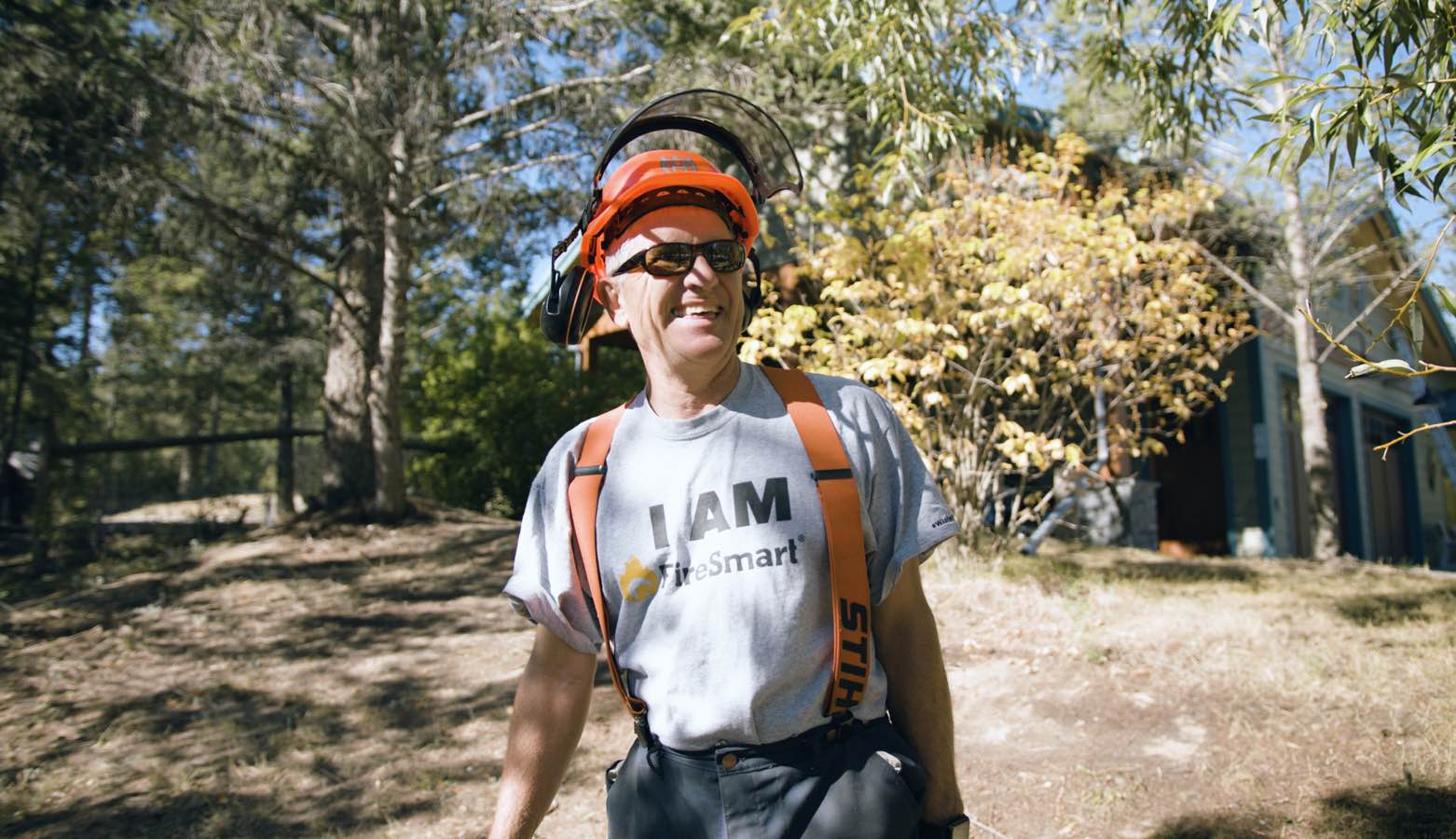The BC Interior is famously full of natural beauty, and perhaps no part of it has more to boast about than the Columbia Valley region. With dazzling and diverse landscapes, relatively moderate weather for most of the year, and healthy lifestyles always close at hand, the area rewards residents and visitors alike in too many ways to count.
There is a dark side, however, to all of this good fortune. During the area’s long, warm, and increasingly dry summers, much of the greenery that blankets the valley provides the perfect fuel for wildfires. Once a wildfire starts, if suppression action is not taken, then the duration and intensity of the wildfire are limited only by natural factors like rain, topography and natural features. While this can mean larger areas get scorched, it also reduces the amount of fuel – in particular fallen needles, branches, and other debris – available for the next fire. In turn, this limits the intensity and temperature at which that next fire burns, making it less destructive and allowing the affected ecosystem to recover more quickly.
Enter various human factors, both direct and indirect. During an average year in British Columbia, about 40% of wildfires are caused by people: vehicle or other engines, improper use of open burning, campfires, etc. Regardless of the cause, today’s wildfire is more likely to find the fuel it needs because climate change has made forests and grasslands drier, and because previous management policies have left some regions carpeted with decades’ worth of combustible material.
Recent patterns of human settlement also make wildfires more destructive than ever before. For millennia, the vast majority of people lived within easy walking distance of fresh water. This meant that when a wildfire did break out, its spread was often naturally confined on at least one side by a lake or river, and residents could use the same source to douse the flames. These days we travel by motor vehicle and get our water from municipal pipes or our own wells, enabling the footprints – and the consequences – of human settlement to reach deeper into forests, higher up mountains, and further from lakes and rivers than ever before.
The result of all this is that more people now than ever live at or near what is called the Wildland Urban Interface (WUI), and that is why Invermere, the Columbia Valley’s largest town, saw its population increase by a robust 15% between 2011 and 2016 (versus provincial and national rates, respectively of 5.6% and 5.0%), a trend expected to continue in the 2021 census. Unfortunately, the natural blessings that abet this growth also bear the seeds of a potential curse for the region: the valley has witnessed significant wildfires in the past, including “scary” ones that threatened communities. Nonetheless, its sheer beauty attracts more and more people, and without suitable compensating interventions, their growing presence inexorably increases the risk of more wildfires – and the attendant threat posed to life and property.
The WUI is a crucial space in which awareness, assessment, prevention, and resilience strategies can make all the difference. It is no surprise, therefore, that Rushmere, a private development consisting mostly of vacation homes just south of Invermere, gained official FireSmart Recognized Neighbourhood status way back in 2015. Surrounded by forest on three sides, residents had seen the devastation caused by earlier wildfires in the valley and elsewhere, and realized that their little community was similarly vulnerable, so they have worked together to improve their individual and collective defences. In addition, FireSmart teachings and their own research had taught them how important it was to make sure there were no weak links in their chain, to close every possible route by which a wildfire could enter their community. This was important because Rushmere is tucked into a corner on the edge of Windermere Lake Provincial Park, making any vulnerabilities there a matter of serious concern. Forearmed with their FireSmart status they approached BC Parks and convinced officials there to harden their own defences along the line between public and private land.
Every year dozens of Rushmere residents take part in FireSmart events, working together to remove combustible materials and building a more cohesive community in the process. Neighbourhood Champion Ken MacRitchie has been a driving force, helping to build and maintain participation. Rushmere’s performance has been so impressive that people from other areas have reached out to him, seeking advice on how to motivate their own neighbours.
“Their challenge,” he explains, “is getting people to understand what those wildfire risks are and what they can do about it.”
Among those following in MacRitchie’s footsteps are Kathleen O’Neill and Ben Mitchell-Banks, FireSmart co-Champions for CastleRock Estates, a subdivision further up the lake and nearer to Invermere proper. Among the obstacles CastleRock has had to surmount are its larger size and higher population, which makes it more difficult to achieve the necessary “critical mass” of participation. This is a key factor because while undertaking FireSmart activities on a single property is a relatively simple matter, its effectiveness can be multiplied several times over by preparing the surrounding neighbourhood as well.
CastleRock still has some holdouts, but given the commitment and enthusiasm with which O’Neill and Mitchell-Banks approach their task, no prudent observer should bet against them.
